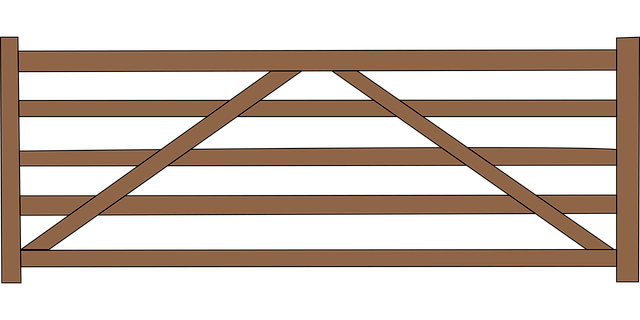Large properties present unique challenges when it comes to fencing, requiring solutions that balance aesthetics, functionality, and affordability. This article explores cost-effective fencing options tailored for extensive landscapes, delving into the intricacies of understanding specific needs, comparing traditional methods with innovative alternatives, and highlighting sustainable materials that promise both durability and financial savings. We also offer creative design inspiration and practical installation tips to ensure your fence enhances your property while remaining a wise investment.
- Understanding Fencing Needs for Large Properties
- Traditional Fencing vs. Cost-Effective Alternatives
- Sustainable and Durable Materials to Save Money
- Creative Design Options for Unique Landscaping
- Installation Tips for Long-Lasting Fences
Understanding Fencing Needs for Large Properties
Large properties come with unique fencing challenges. The extensive perimeters often require durable, long-lasting materials to withstand harsh weather conditions and potential damage from wildlife or passing traffic. Security is another key concern; fences must be robust enough to deter intruders while maintaining aesthetic appeal for the property’s overall value.
Functionality is also paramount. Fences should facilitate easy access for maintenance and allow for flexible use of space, whether for livestock grazing, gardening, or creating designated play areas. A well-designed fence system should integrate seamlessly with the natural landscape, enhancing the property’s beauty rather than detracting from it.
Traditional Fencing vs. Cost-Effective Alternatives
Traditional fencing methods can be expensive and often require regular maintenance, making them less appealing for large properties. The high cost is primarily due to the materials used and the labour involved in installation. However, there’s a growing trend towards cost-effective alternatives that offer both functionality and aesthetics. These modern solutions are not only more affordable but also low-maintenance, making them ideal for expansive areas where traditional fencing might be impractical or prohibitive.
By opting for innovative designs and materials like vinyl, wood composite, or even chain link with custom finishes, homeowners can achieve a secure perimeter while saving significantly on their budgets. These alternatives provide durability, resistance to elements, and in some cases, advanced security features without the hefty price tag of traditional fencing.
Sustainable and Durable Materials to Save Money
When considering fencing for large properties, opting for sustainable and durable materials can significantly reduce long-term costs. Traditional fencing options may require frequent repairs or replacements due to weather exposure, vandalism, or poor quality. However, using materials like recycled plastic, composite wood, or steel—known for their resilience and longevity—can save money in the long run. These materials are designed to withstand harsh environmental conditions, resist rot, and repel pests, ensuring your fence remains robust and aesthetically pleasing for years.
Moreover, sustainable materials offer economic benefits beyond initial installation costs. Recycled plastic, for instance, is often cheaper than traditional wood or metal, and composite wood products can mimic the look of real wood while being more cost-effective and easier to maintain. By choosing durable and eco-friendly options, property owners can enjoy a reliable fence that contributes to a greener environment without compromising on quality or affordability.
Creative Design Options for Unique Landscaping
When it comes to fencing large properties, creativity can transform a simple barrier into an eye-catching feature that enhances the overall landscape design. Property owners have a wide range of options to choose from, allowing for unique and personalized looks. From custom-shaped panels to intricate latticework, the possibilities are endless. For instance, curved or angled fences can add fluidity to the landscape, while adding decorative elements like arbors or trellises can provide both privacy and a sense of tranquility.
Integrating fencing with existing natural features is another creative approach. Living fences, using plants or hedges, offer an organic alternative that can blend seamlessly into the property’s topography. Combining different materials, such as wood, metal, or vinyl, with creative designs further allows for distinctive looks. These design options not only make large properties more aesthetically pleasing but also provide practical solutions for defining spaces and ensuring privacy while still allowing natural light and air to circulate.
Installation Tips for Long-Lasting Fences
When installing fences for large properties, planning and preparation are key to ensuring longevity. Start by assessing the terrain; consider any slopes or uneven ground, as these can impact fence stability. Use this assessment to choose a suitable fence type – post-and-rail or chain link, for instance, offer different levels of durability and maintenance based on your landscape.
Digging holes for posts should be done precisely, ensuring they’re deep enough to support the fence against shifting soil. Consider using concrete for extra strength, especially in windy areas. Regular cleaning and treatment will also extend the life of your fence. Apply a water-repellent sealer to wooden posts annually, and inspect regularly for signs of rot or damage, addressing issues promptly.
